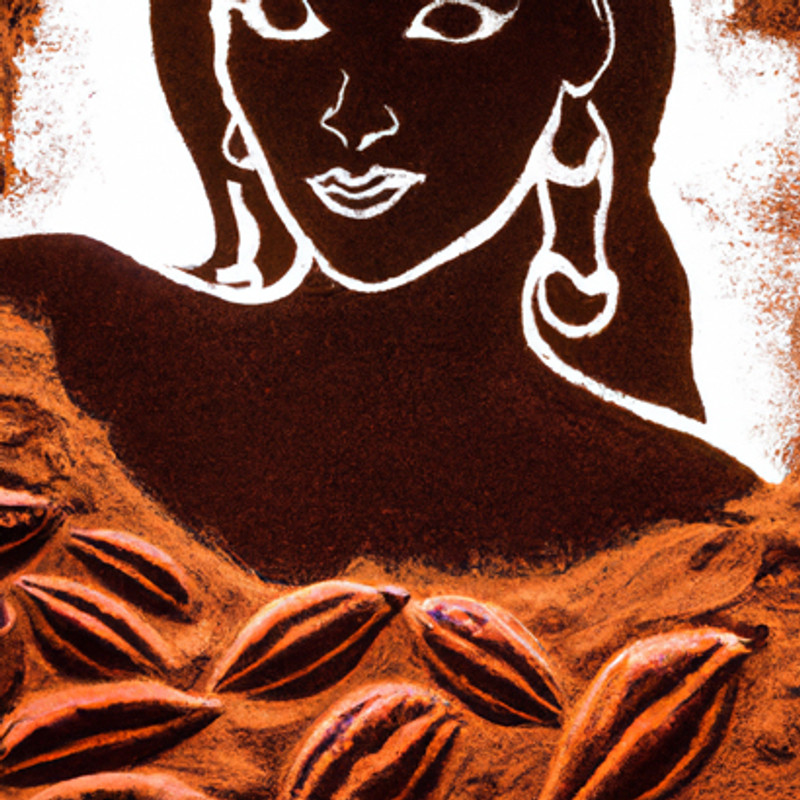People often use the words cacao and cocoa when they talk about chocolate. They may seem different at first, but they are actually very similar and are often used to mean the same thing. Let's make it easy to understand how these words vary, where they came from, and what they mean.
Cocoa vs. Cacao: The Basics
The short answer is that there’s very little difference between “cocoa” and “cacao.”
- Cacao is the Spanish word that comes from the Mayan word kakaw, which refers to the fruit of the Theobroma Cacao tree.
- "Cocoa" is just the English translation of the word "cacao."
In everyday use, the terms can often mean the same thing. But the phrases could mean different things in different countries, cultures, or even businesses.
What Does “Cacao” Mean in the United States?
The word "cacao" in the U.S. usually means the uncooked, entire seeds (sometimes called beans) of the cacao fruit. Before being roasted or processed, these seeds are taken out of the cocoa pod.
On the other hand, cocoa usually refers to the powder that comes from grinding and pressing roasted cacao beans (also called cocoa nibs).
So, while cacao is often linked with the whole, raw seed, cocoa is more commonly connected with the roasted and powdered form.
Fat Content: Cocoa Butter vs. Cocoa Powder
Cacao beans naturally contain about 50% fat, which is known as cocoa butter.
When the beans are processed into cocoa powder, much of this fat is removed. Cocoa powder generally contains 10% to 24% fat depending on how it’s made.
Aside from this fat content, there’s no official difference between cacao and cocoa under U.S. FDA guidelines.
How Other Countries Use the Terms
There may be some cultural and linguistic differences between the US and other places where the words cocoa and cacao are used. In some places, "cocoa" refers to the baked powder and "cacao" refers to the natural, less processed form.
This difference can be hard to understand at times, but both words still mean the same thing and come from the same source: the cocoa bean.
Cacao Powder vs. Cocoa Powder: Modern Usage
In the past, Americans used the phrases cocoa and cocoa powder to mean the same thing.
But in the last few years, advertising and pop culture have changed how individuals use these words. The word "cacao" is becoming more prevalent, and it is sometimes sold as the "raw" or "natural" variety.
It's vital to know that this difference is more about how people see things and how they are branded than it is about science or law.
Why Roasting Matters
Some people think that “raw cacao” is a better or purer form of cocoa. But in actuality, roasting is a very critical step in making cocoa safe to eat and improving its taste.
Roasting makes the chocolate taste stronger, which is what people want. Cacao can taste very different, and less familiar, without it.
Types of Cocoa Powder
Cocoa powders generally fall into two main categories:
- Natural Cocoa Powder – This is non-alkalized and is essentially the same as cacao powder.
- Alkalized Cocoa Powder (Dutched Cocoa) – This cocoa has been treated to reduce acidity, making it smoother in flavor and darker in color.
Dark cocoa powder is sometimes misunderstood as being “more processed” than cacao powder, but in reality, natural cocoa powder and cacao powder are the same thing.
What is Alkalization?
- Lessen their acidity
- Make ingredients more soluble and useful in recipes
- Make your own colors and taste profiles
For instance, OREO cookies have a dark color because they use black cocoa powder, which is a type of alkalized cocoa.
Alkalization can be done in both organic and chemical ways. Under U.S. law, any cocoa that has been alkalized must be clearly labeled as such.
Misunderstandings About Cocoa
Because of advertising, many people have come to believe that cocoa products are overly processed or less “natural.” In reality, natural cocoa powder is not treated with alkalization, which means it is essentially the same as cacao powder.
The idea that all cocoa is heavily processed is a misconception. The differences usually come down to whether or not alkalization has been applied.
Conclusion
At the end of the day, cacao and cocoa come from the same source, the cacao bean. People often use the words branding and culture to indicate the same thing, but they can also mean different things in various contexts.
Here's a basic summary:
- Cacao means whole beans or seeds, which is typically used to mean less processed.
- Cocoa = roasted and powdered form of the beans.
- Natural Cocoa Powder = the same as cacao powder.
- If you treat cocoa to make it less acidic and give it different colors and tastes, you get alkalized cocoa powder.
Words like "organic" or "alkalized" may give you more information, but it's important to know that ads can sometimes make the differences sound bigger than they really are. Both cacao and cocoa are important for making chocolate taste the way we know and love it.


